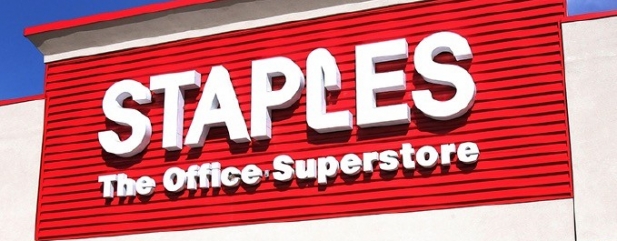Archived article
Please note that tax, investment, pension and ISA rules can change and the information and any views contained in this article may now be inaccurate.
Wide dispersion of discounts and premiums among private equity trusts

There is an unusually wide spread between the premiums and discounts in the private equity-focused investment trust space. We would normally expect such products to trade below the value of their underlying assets yet the sector currently has some trading on discounts as wide as 40% and premiums of more than 26% to net asset value (NAV).
Investment bank Stifel argues there should be a natural discount rate of 10% to reflect illiquid portfolios and long holding periods of typically five years. Of the eight private equity investment trusts trading at a discount, all of them are trading in excess of this 10% figure. Bucking the trend are HgCapital Trust (HGT) which trades on a 1.8% premium to NAV and 3i (III) which commands a remarkable 26.6% premium.
WHY ARE MOST TRADING ON WIDE DISCOUNTS?
The recent suspension of Woodford Equity Income Fund (BLRZQ73) highlights the perils of a liquidity mismatch, which is why investment trusts are a more appropriate vehicle for illiquid investments as they are closed-ended funds.
Even so the knock-on impact on investment trust Woodford Patent Capital Trust (WCPT), where the discount has blown out to 30%, emphasises how investor sentiment can impact the levels of discount.
In addition to the illiquidity issue is the fact that the assets in a private equity trust do not have a daily price like publicly quoted stocks. Outside of any business sales (realisations) that occur, management will provide an estimate, sometimes every quarter, or maybe once a year.
Investors are sometimes sceptical of reported net asset values. In recent years it appears that most assets in the sector have been valued conservatively.
PERFORMANCE MATTERS
Performance and length of tenure of the managers seem to be the most important factors in explaining the dispersion of returns. Delivering better performance is not a guarantee, but it is a very effective way to shrink any discount or even push the shares to a premium.
We conducted a simple correlation calculation, looking at those trusts with five-year performance data, excluding those products which invest in other funds and discovered a 93% correlation. That is to say, long term performance in the growth rate of the net asset value explains almost all of the differences in the levels of price discount.
It should be noted that there are only a handful of trusts in the sample, so it may not be statistically significant. Even if we remove 3i from the sample, due to the fact that it is eight times larger than the next largest trust, the correlation is still 73%.
Interestingly, in the funds-of-funds segment, we didn’t find any correlation between long-term performance of the NAV and the level of price discount/premium.
This seems to be due to the apparent anomaly of HarbourVest Global Private Equity (HVPE), which has produced by far the best returns but trades in line with the sector average discount. Therefore, it might be worthy of further investigation.
OTHER FACTORS IMPACTING DISCOUNTS
The size of a trust and whether it has a long history of reporting net asset values conservatively, i.e. subsequent maturing assets in the fund are realised at valuations above the carrying book values, increases confidence in the sustainability of a trust, potentially reducing the discount.
This could further explain why 3i trades at a large premium to its peers. 3i also has the benefit of a well-recognised brand and invests around 20% of its assets in infrastructure projects, differentiating itself from peers.
Corporate governance is an area which on closer scrutiny might lead to wider discounts, especially where the voting structure is not transparent or where the manager enters into a number of related transactions with the trust.
IMAGE PROBLEM
Despite all the reasons that might help explain why most investment trusts trade at a discount, ironically, performance shouldn’t be one of them. The sector five-year average NAV return, excluding 3i, has been 82.6% which compares favourably with the FTSE All-Share index return of 30%.
It does seem that the managers of private equity trusts have an image problem which reflects a lack of investor confidence in the sustainability of future returns.
We spoke to various analysts and managers and they all pointed to the fact that the sector is still suffering from the long shadow of the financial crisis of 2008. They insist that ‘lessons have been learned’ and the sector is a far different beast today. It appears that the bad old image of private equity being a highly leveraged, high beta play on public markets, isn’t so accurate anymore.
The underlying assets in trusts today are more mature, which means they are cash generative with a number of trusts paying a dividend. Other differences with the past include the unfunded commitments and leverage employed being lower, even on a look-through basis. That’s taking into account the amount of debt employed by the investee companies as well as at the fund level.
The average gain on book value has been in a 25% to 40% range over the last five years, according to HarbourVest. In simple terms that means the exit valuations of companies in the portfolio have been in excess of the ‘carrying value’ of the investments on the books.
RISING CONCERNS
On the other side of the debate are those who are worried about the amount of unutilised cash slopping around, estimated to be $1.2trn globally, which increases competition for deals. There is a risk that managers overpay for assets in the future, thus lowering returns.
In a bizarre way, a heightened appetite to deploy cash also means that today there are more ready buyers of assets, making exits appear ‘easier’ and more frequent. It could explain the high average realisations that have been reported over the last few years.
Important information:
These articles are provided by Shares magazine which is published by AJ Bell Media, a part of AJ Bell. Shares is not written by AJ Bell.
Shares is provided for your general information and use and is not a personal recommendation to invest. It is not intended to be relied upon by you in making or not making any investment decisions. The investments referred to in these articles will not be suitable for all investors. If in doubt please seek appropriate independent financial advice.
Investors acting on the information in these articles do so at their own risk and AJ Bell Media and its staff do not accept liability for losses suffered by investors as a result of their investment decisions.

 magazine
magazine









